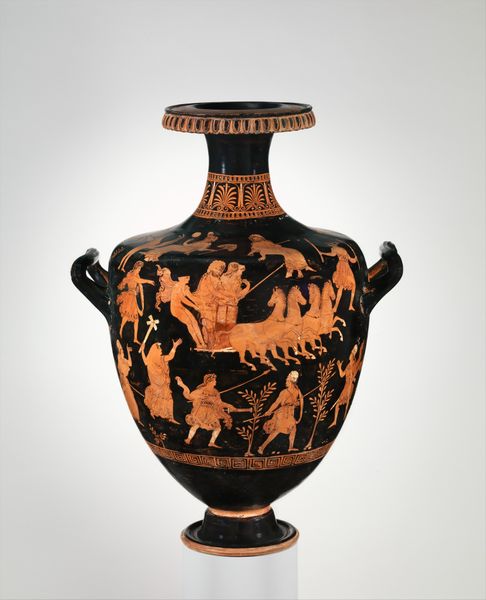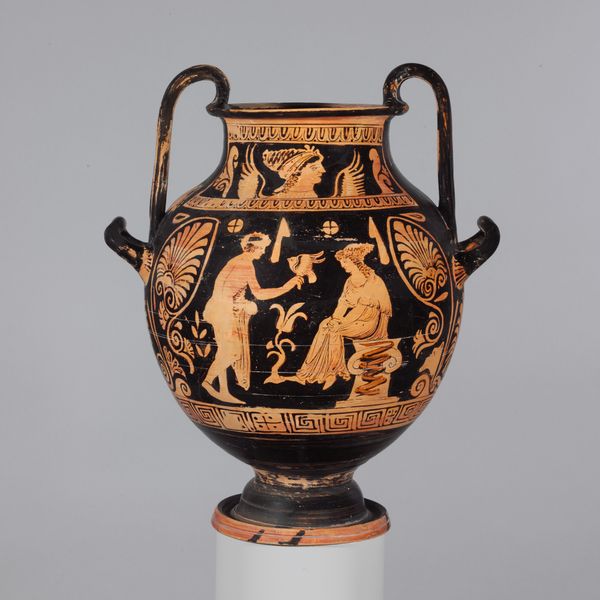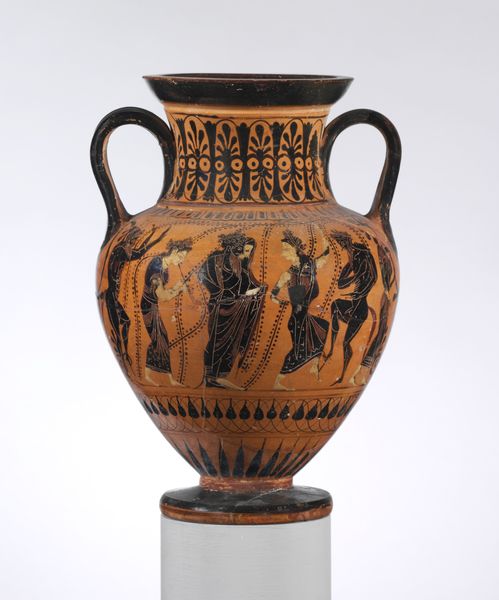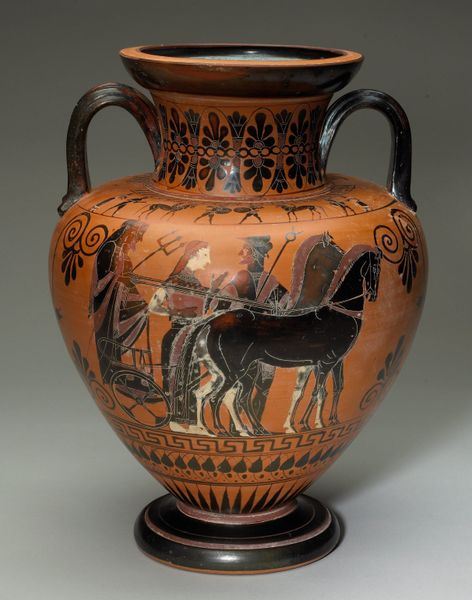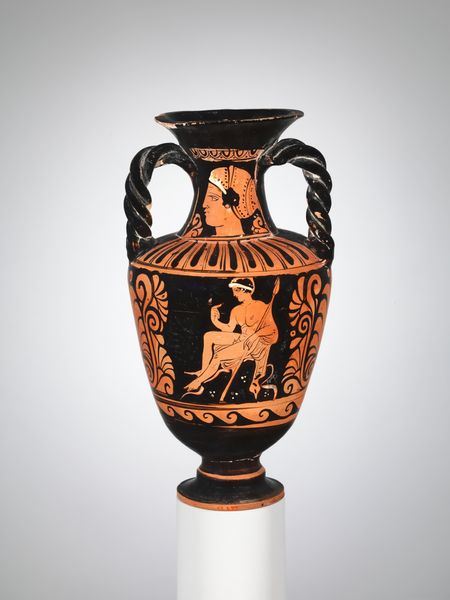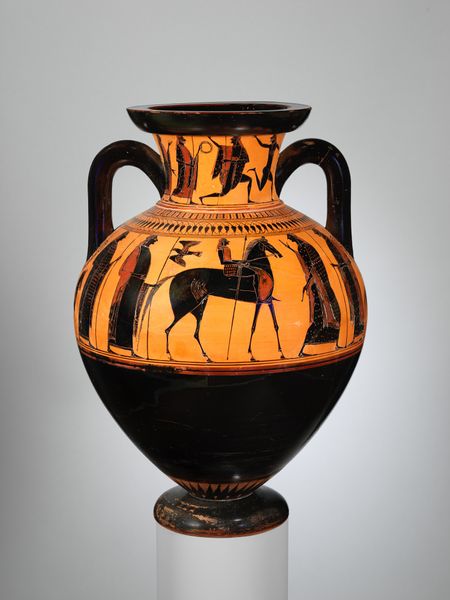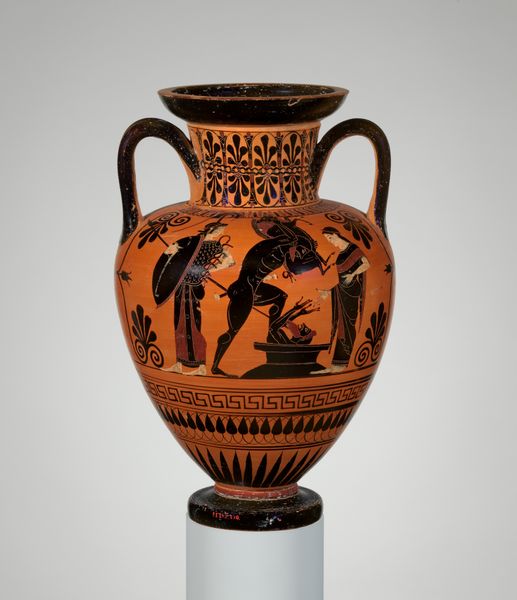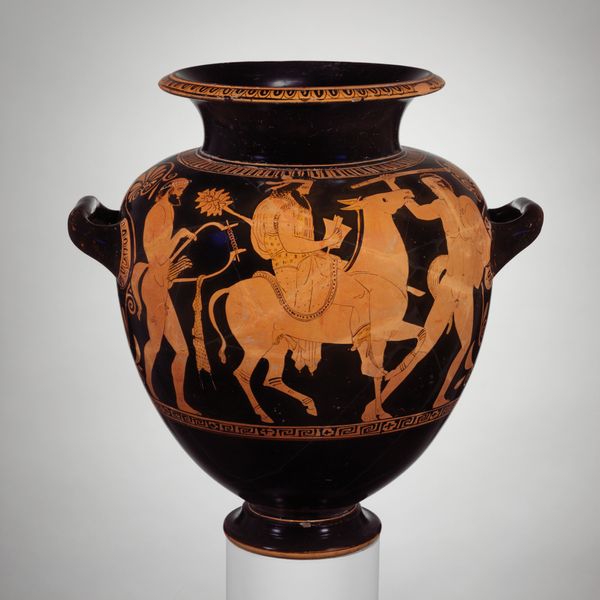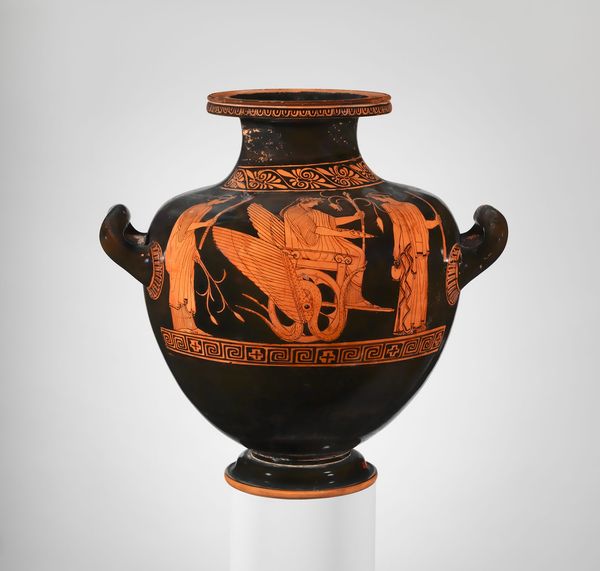
drawing, ceramic, terracotta
#
drawing
#
greek-and-roman-art
#
landscape
#
ceramic
#
vase
#
figuration
#
roman-art
#
ancient-mediterranean
#
horse
#
ceramic
#
men
#
history-painting
#
terracotta
Dimensions: H. 23 1/2 in. (59.7 cm)
Copyright: Public Domain
Editor: This is a terracotta hydria, or water jar, created around 350 BC by the Group of Naples 3227. It’s currently housed at the Metropolitan Museum of Art. I’m immediately drawn to the figures and the stark contrast between the black background and the orange-red figures. What compositional choices stand out to you? Curator: Indeed, the piece presents a fascinating study in contrasting form. Note the meticulous application of black glaze which sets the stage. The artist manipulates positive and negative space expertly, doesn’t he? What strikes you about the central grouping? Editor: Well, I'm curious about the way the figures interact, they create almost a diagonal line of motion with the rider and the figure offering something on the plate, but what does the form or composition tell us about that scene? Curator: Precisely. The formal tension is captivating, is it not? See how the repeated curved lines in the figures’ drapery play against the hard edges of the weapons and armour. Do you agree it lends a kinetic quality, a frozen moment pregnant with potential action? Editor: Yes, it is interesting how these stylistic choices enhance the depicted moment. Did they serve symbolic functions too, as formal qualities, at the time? Curator: In a way. These ceramic forms are functional and decorative and would have adhered to codes of visual rhetoric. The Group of Naples 3227 here presents a studied approach to pictorial storytelling with very few tools – texture and space becoming central to the whole work. It's worth noting the geometric details adorning the neck of the vase – those horizontal lines lend structure. It elevates it, would you not agree? Editor: It really does, yes! Seeing it discussed this way brings another layer of appreciation to it, for sure! Thank you. Curator: A pleasure.
Comments
No comments
Be the first to comment and join the conversation on the ultimate creative platform.
